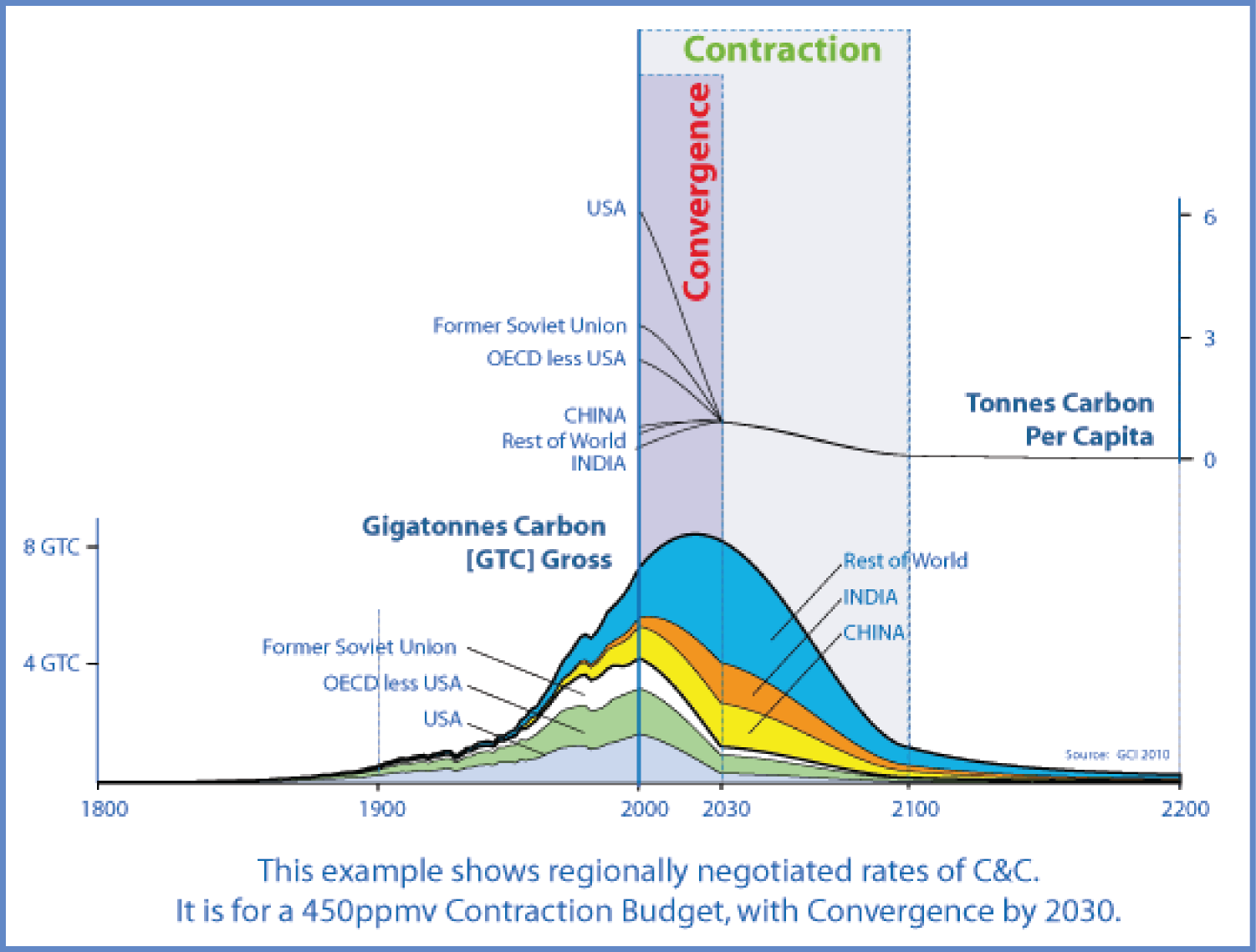Aubrey,
I would be happy to support GCI's current C&C proposal to UNFCCC.
There is an immediate need for more action on climate change and a response from all governments and international organisations like the United Nations.
Individuals too can help in this and educational establishments like ours can educate students in a positive manner.
Best Wishes
David
Professor David Huddart
Director of Research Faculty of Education,
Community and Leisure
I.M.Marsh Campus
Liverpool John Moores University
Contraction and converqence: The last hope?
Surporled by China, Germany, The European Parliament, Stern and many others, this concept is on the idea that everyone on planet Earth has the right to emit the same quantity of GHG. At present a US citizen emits 20 tonnes of CO2 each year, a UK citizen emits 11 tonnes while a Nigerian only emits 0.09 tonnes. Contraction and Convergence [C&C] is the Global Commone Institute's proposed UNFCCC-compliant climate mitigation strategy for an equitable solution to cutting greenhouse gas emissions through collective global action.The ultimate objective of the UN Climate Treaty is to move to safe and stable GHG concentration in the atmosphere and C&C starts with this. C&C recognizes that subject to this limit, we all have an equal entitlement to emit GHGs to the atmosphere, since continuing unequal use will make it impossible to get global agreement needed for success. The Kyoto Protocol cannot be the basis of this success, because it is not science-based and, due to divergent national interests, it does not include all countries.
Scientists have advised on safe concentration of CO2 in the atmosphere and on the global cap on emissions necessary to achieve it. A level of 450 ppmv has until recently been regarded as the upper limit for keeping under the maximum temperature oncrease of 2 degrees above the pre-industrial average.
From the inception of a global agreement, C&C schedules the mandatory annual global contraction [reduction of emissions] that will keep CO2 concentrations from rising beyond the agreed safe level. This rate of contraction must be periodically adjusted to take account of the increasing release of GHGs caused by climate warming. C&C proposes emissions entitlements to every country. While starting with current emissions, it proposes a scheduled convergence to equal per person entitlements for everyone on the planet by an agreed date [see figure above]. That way, convergence will reduce the carbon shares of the developed over-emitting countries sharply until they converge with the [temporarily rising] shares of the developing countries. The latter will be able to sell their surplus carbon shares to the wealthier nations. Emissions trading will be subject to rapid investment in renewable energy.
The 14th session of the Conference of the Parties to the Climate Change Convention [COP-14] will be held in conjunction with the 4th Conference of the Parties serving as the Meeting of the Parties to the Kyoto Protocol [COP 14] in Poznan, Poland, from 1 to 12 December 2008. In 2012 the Kyoto Protocol expires. To keep the process going there is an urgent need for a new climate protocol. In 2012 the Kyoto Protocol runs out. It is to be hoped that discussions at the Climate Conference in Copenhagen in 2009 and subsequent agreements lead to a Copenhagen Protocol to prevent global warming and climate change.
Earth Environments: Past, Present and Future
By David Huddart, Tim Stott




